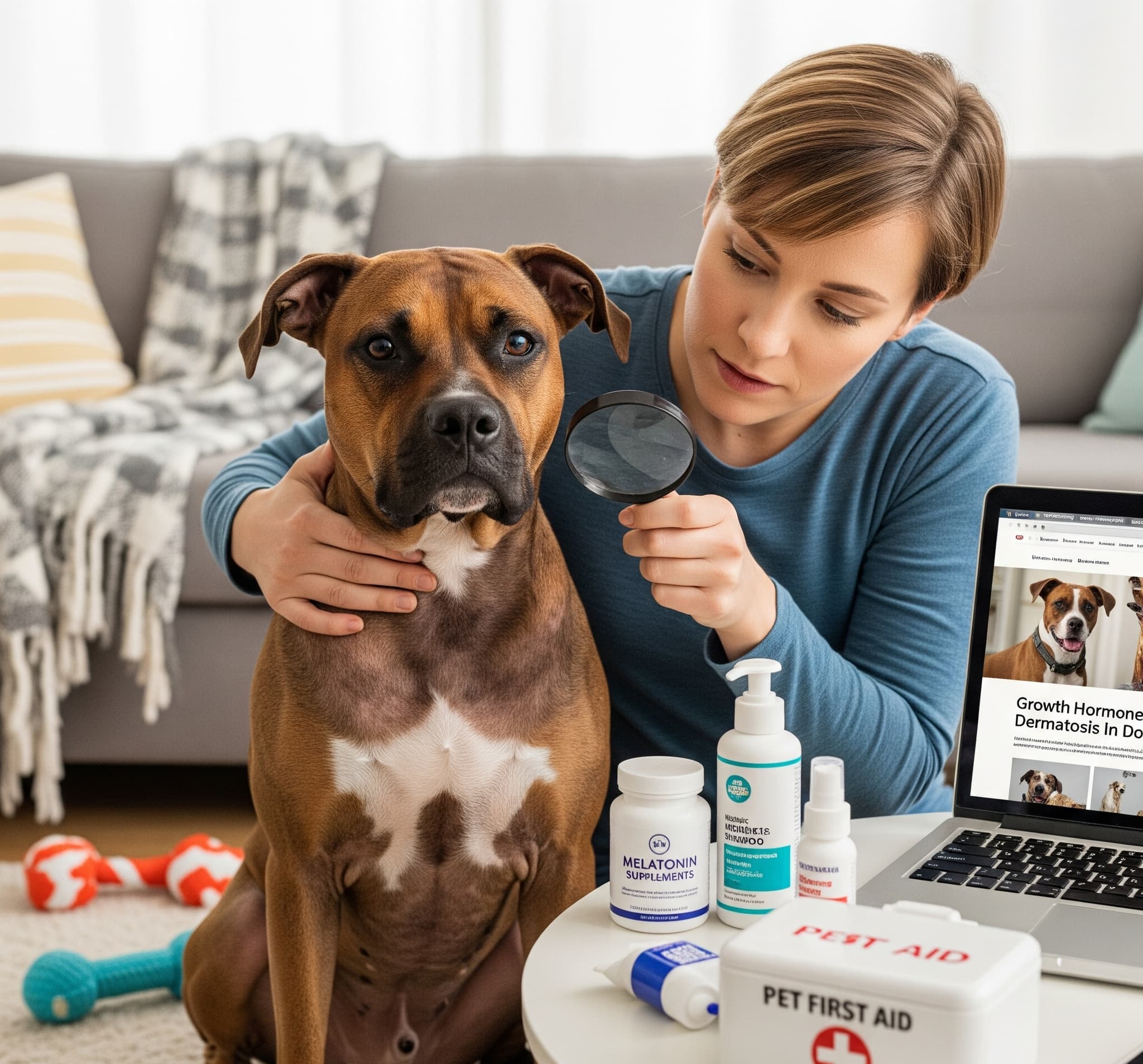Safe or Not? NexGard Truth Every Dog Owner Needs
Is NexGard safe for dogs? Get the facts about side effects, safety concerns, and what vets really think about this popular flea treatment.
Introduction
Many dog owners wonder “is NexGard safe for dogs?” when their vet suggests this popular flea and tick treatment. You’re not alone in having concerns about giving your furry friend any medication. With so much conflicting information online, it’s hard to know what’s true about NexGard safety.
This guide gives you the straight facts about NexGard. We’ll cover real side effects, safety data, and what veterinarians actually say about this treatment. You’ll get clear answers to help you make the best choice for your dog’s health.
To help you navigate this guide and find the information you need most, here are the key sections we’ll explore:
- What Is NexGard and How Does It Work?
- Real Side Effects: What Actually Happens to Dogs
- Safety Studies: What the Research Really Shows
- Warning Signs Every Dog Owner Must Watch For
- Frequently Asked Questions About NexGard Safety
What Is NexGard and How Does It Work?
NexGard is a prescription flea and tick prevention medication for dogs. The active ingredient is afoxolaner, which belongs to a class of drugs called isoxazolines. This medication comes as a tasty chew that most dogs eat willingly.
The drug works by targeting the nervous system of fleas and ticks. When these pests bite your dog, they ingest the medication through your pet’s blood. The afoxolaner then causes overstimulation of the pest’s nervous system, leading to death within hours.
NexGard starts killing fleas within 4 hours and ticks within 12 hours. It provides protection for a full month with just one dose. The FDA approved NexGard in 2013 after extensive testing for safety and effectiveness.
Unlike topical treatments that can wash off or cause skin irritation, NexGard works from inside your dog’s body. This makes it effective even if your dog swims or gets bathed frequently. The medication is metabolized by your dog’s liver and eliminated through normal bodily processes.
Real Side Effects: What Actually Happens to Dogs
Most dogs take NexGard without any problems. However, like all medications, some dogs may experience side effects. Here’s what actually happens based on real data from veterinary reports.
The most common side effects are mild and include vomiting, dry skin, diarrhea, and loss of appetite. These occur in less than 5% of dogs taking NexGard. Most of these symptoms are temporary and resolve on their own within a day or two.
Some dogs may show behavioral changes like lethargy or increased thirst. Again, these effects are usually mild and short-lived. If your dog seems unusually tired after taking NexGard, this typically improves within 24-48 hours.
More serious side effects are rare but can include seizures, especially in dogs with a history of seizure disorders. The FDA requires a warning about potential neurological effects on the NexGard label. However, studies show seizures occur in less than 0.1% of dogs taking the medication.
Allergic reactions are possible but uncommon. Signs include facial swelling, hives, or difficulty breathing. If you notice these symptoms, contact your vet immediately. Most allergic reactions happen within the first few hours of giving the medication.
It’s important to note that many reported side effects may not be directly caused by NexGard. Dogs can get sick from other causes around the same time they take their monthly dose, making it seem like the medication caused the problem.
Safety Studies: What the Research Really Shows
Multiple studies have tested NexGard safety in thousands of dogs. The FDA required extensive testing before approving the medication, and ongoing monitoring continues to track any safety concerns.
Clinical trials involved over 14,000 dogs of different breeds, ages, and health conditions. These studies showed NexGard is safe when used as directed. The medication was tested at doses up to 5 times the recommended amount without causing serious harm.
Long-term safety studies followed dogs for over a year of continuous use. Results showed no increase in health problems compared to dogs not taking the medication. Blood tests remained normal, and there were no signs of organ damage.
European regulatory agencies have also reviewed NexGard safety data. The European Medicines Agency concluded the benefits outweigh the risks for most dogs. Similar approvals exist in over 50 countries worldwide.
Post-market surveillance continues to monitor NexGard safety. Veterinarians report any suspected side effects to the FDA. This system helps identify any new safety concerns that might emerge over time.
Independent researchers have also studied NexGard. A 2019 study in the Journal of Veterinary Internal Medicine found no increased risk of seizures in dogs taking isoxazoline medications like NexGard compared to other flea treatments.
Warning Signs Every Dog Owner Must Watch For
While NexGard is generally safe, you should know what warning signs to watch for after giving your dog this medication. Early detection of problems can prevent more serious issues.
Watch for neurological symptoms like tremors, loss of coordination, or unusual behavior changes. While rare, these can indicate a serious reaction that needs immediate veterinary attention. Seizures are the most concerning neurological side effect, though they affect very few dogs.
Digestive upset is more common but usually mild. However, severe vomiting or diarrhea that lasts more than 24 hours warrants a call to your vet. Dehydration can become a concern if your dog can’t keep food or water down.
Skin reactions might include excessive scratching, redness, or hair loss. While NexGard often improves skin health by eliminating fleas, some dogs may have allergic reactions to the medication itself.
Changes in appetite or energy levels usually resolve quickly. But if your dog won’t eat for more than 24 hours or seems extremely lethargic, contact your veterinarian. These could be signs of a more serious reaction.
Keep a record of when you give NexGard and any symptoms you notice. This information helps your vet determine if the medication is causing problems or if other factors are involved.
Frequently Asked Questions About NexGard Safety
Can puppies safely take NexGard?
NexGard is approved for puppies as young as 8 weeks old, provided they weigh at least 4 pounds. Young puppies process medications differently than adult dogs, so it’s especially important to follow dosing instructions exactly. Most puppies tolerate NexGard well, but watch closely for any side effects during their first dose.
Is NexGard safe for pregnant or nursing dogs?
The safety of NexGard in pregnant or nursing dogs hasn’t been fully established. Most veterinarians recommend avoiding it during pregnancy unless the flea infestation poses a greater risk to the mother and developing puppies. Discuss alternatives with your vet if your dog is pregnant or nursing.
Can NexGard be given with other medications?
NexGard can usually be given safely with most other medications, including heartworm preventatives and vaccines. However, always tell your vet about any other medications or supplements your dog takes. Some drug combinations might increase the risk of side effects.
What should I do if my dog vomits after taking NexGard?
If your dog vomits within 4 hours of taking NexGard, the medication may not have been fully absorbed. Contact your vet to ask whether you should give another dose. Don’t automatically give a second dose without veterinary guidance, as this could lead to overdosing.
Conclusion
NexGard is safe for most dogs when used as directed by a veterinarian. While side effects can occur, serious reactions are rare. The medication has undergone extensive safety testing and continues to be monitored for any new concerns.
The key to using NexGard safely is working with your veterinarian. They can assess whether this medication is right for your specific dog based on their health history, age, and other factors. Don’t hesitate to discuss any concerns you have about flea and tick prevention options.
Remember that untreated flea and tick infestations pose their own health risks to your dog. These pests can transmit serious diseases and cause severe skin problems. For most dogs, the benefits of prevention far outweigh the small risk of medication side effects.
Ready to make an informed decision about your dog’s flea and tick prevention? Schedule a consultation with your veterinarian today to discuss whether NexGard is the right choice for your furry family member. Your vet can provide personalized advice based on your dog’s specific needs and health status.




Post Comment